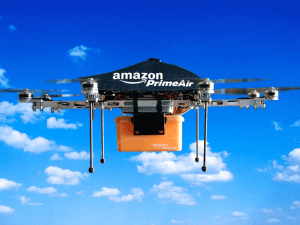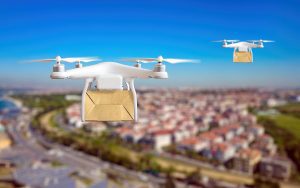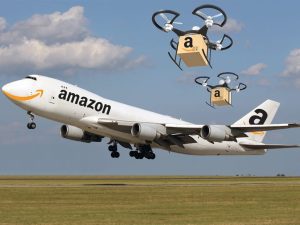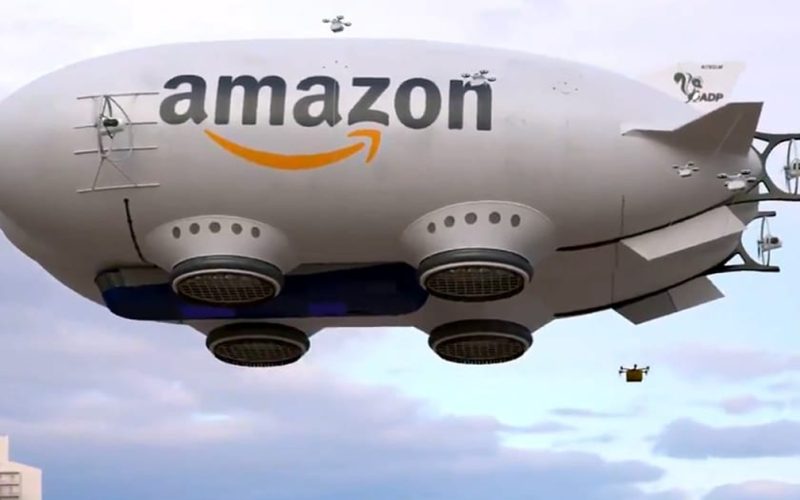The Future of Amazon Drone Delivery Services
The evolution of technology is redefining industries worldwide, and the logistics sector is no exception. Among the most revolutionary advancements is the integration of Amazon Drone delivery services. Once confined to military operations and hobbyists, drones now represent a significant leap in the way goods, medical supplies, and essentials can be transported swiftly and efficiently. This article explores the promising future of drones in delivery, highlighting key benefits, real-world examples, case studies, and the challenges this technology must overcome.
1. Introduction to Amazon Drone Delivery Services

Amazon’s Drone Delivery Service represents a groundbreaking step in the evolution of e-commerce and logistics. This innovative program leverages advanced drone technology to offer fast, efficient, and contactless delivery solutions. Designed to cater to consumer demands for quicker delivery times, Amazon drones can transport lightweight packages directly to customers’ doorsteps within minutes of ordering. This service not only enhances convenience but also reduces reliance on traditional delivery methods, thereby contributing to reduced traffic congestion and carbon emissions. The drones are equipped with sophisticated navigation systems and sensors to ensure safe and precise deliveries, even in complex urban environments.
Beyond speed and efficiency, Amazon’s Drone Delivery Service also has the potential to revolutionize accessibility. In remote or underserved areas where conventional delivery routes are challenging, drones can provide a reliable alternative, bridging the gap in service. This technology demonstrates Amazon’s commitment to integrating cutting-edge innovation into its operations, aiming to meet customer expectations while advancing sustainability. With rigorous safety standards, regulatory compliance, and ongoing improvements in drone technology, Amazon is setting a precedent for the future of last-mile delivery solutions in the global marketplace.
2. Amazon’s Mk30 Drone Program
Amazon has been a pioneer in drone delivery, with its Prime Air program at the forefront. Recently, the company unveiled its Mk30 drone, an upgrade designed to address some of the critical challenges in drone delivery.
Key Features of the Mk30
- Extended Range: The Mk30 boasts twice the range of its predecessors, allowing it to deliver packages to more remote locations.
- Weather Resilience: Unlike earlier models, the Mk30 can operate in rainy conditions, making it suitable for diverse climates.
- Noise Reduction: With a 50% reduction in noise levels, it aims to minimize community disturbances.
Implementation in Arizona
Amazon has received FAA approval to deploy the Mk30 in the Phoenix Metro Area. Customers can receive eligible items weighing less than five pounds in under an hour, marking a significant milestone in the scalability of drone operations.
Benefits and Implications:
- Faster delivery times.
- Reduced reliance on traditional vehicles, cutting down on carbon emissions.
- Improved accessibility for customers in suburban and rural areas.
3. Wing’s Residential Drone Delivery Service
Wing, a subsidiary of Alphabet, has emerged as a major player in residential drone delivery. The company’s operations in the Dallas-Fort Worth area are among the largest of their kind globally.
Operational Highlights
- Partnership with Walmart: Wing has collaborated with Walmart to deliver groceries and household items, serving over 60,000 households.
- Precision and Efficiency: Drones pick up packages via tethers and deliver them to precise locations, calculated using advanced software.
- Scalability: Wing aims to expand its service to the entire 8 million population in the metroplex.
Case Study: Dallas-Fort Worth
In Dallas, Wing’s drones have successfully completed thousands of deliveries, showcasing the feasibility of large-scale operations. By integrating with local stores and using advanced navigation systems, the company has optimized last-mile delivery.
4. Healthcare Revolution: NHS Drone Deliveries
The healthcare sector stands to benefit immensely from drone technology. The UK’s National Health Service (NHS) recently launched a groundbreaking program to deliver medical supplies via drones.
Blood Sample Deliveries in London
- Speed: The delivery time for blood samples between Guy’s and St Thomas’ hospitals has been reduced from 30 minutes to just 2 minutes.
- Cost Efficiency: Drones are more economical than traditional delivery methods, particularly in congested urban areas.
- Eco-Friendliness: The initiative significantly reduces the carbon footprint associated with medical logistics.
Case Study: Apian’s Collaboration with NHS
Developed by British start-up Apian, this project exemplifies how drones can streamline critical healthcare processes. The collaboration with Wing and Guy’s and St Thomas’ NHS Foundation Trust demonstrates the reliability of drones in high-stakes environments.
5. Technological Advancements in Drone Design

The success of drone delivery hinges on continuous technological innovation. Companies are addressing challenges related to payload capacity, noise, and flight autonomy.
Notable Innovations
- Noise Reduction: Amazon’s Mk30 model addresses community concerns with quieter operations.
- Weather Adaptability: Modern drones can function in adverse weather, expanding their operational scope.
- AI Integration: Artificial intelligence enhances navigation, obstacle detection, and delivery precision.
These advancements ensure that drones are not only efficient but also sustainable and adaptable to real-world conditions.
6. Environmental and Sustainability Benefits
One of the most significant advantages of drone delivery is its positive environmental impact. Traditional delivery vehicles contribute to traffic congestion and greenhouse gas emissions, whereas drones offer a greener alternative.
Key Environmental Benefits
- Reduced Carbon Emissions: Electric drones eliminate the need for fossil fuels.
- Energy Efficiency: Drones consume less energy than traditional delivery trucks.
- Urban Mobility: By taking deliveries off the road, drones help reduce traffic congestion and pollution.
Real-World Example: Wing’s Impact in Dallas
Wing’s operations in Dallas have shown measurable reductions in carbon emissions, as drones replace short-distance vehicle trips. This serves as a model for sustainable urban logistics.
7. Challenges in Community Acceptance
Despite their benefits, drones face significant resistance from communities, primarily due to noise pollution. For instance, residents in College Station, Texas, have voiced concerns about the noise generated by Amazon’s drones.
Community Concerns
- Noise Levels: The sound of drones, particularly during take-off and landing, has been likened to a swarm of bees.
- Privacy Issues: The use of drones equipped with cameras raises concerns about surveillance.
- Safety Risks: Accidents involving drones could lead to property damage or injuries.
Addressing these issues will require better communication with communities, as well as technological improvements to reduce noise and enhance safety.
8. Regulatory and Safety Considerations
The regulatory landscape for drone delivery is evolving rapidly, with agencies like the FAA playing a pivotal role in setting standards.
FAA’s Role
- Approving drones for beyond visual line-of-sight operations.
- Establishing safety protocols for urban and suburban flights.
- Monitoring compliance with noise and environmental standards.
Safety Protocols
To ensure the safe integration of drones into airspace, companies are adopting measures like geofencing, automated collision avoidance, and fail-safe systems.
9. Scalability and Future Prospects

The scalability of drone delivery depends on overcoming logistical, technological, and regulatory hurdles. However, the potential is enormous.
Opportunities
- Smart Cities: Drones can integrate seamlessly with smart city infrastructure, using AI to optimize delivery routes.
- E-Commerce Expansion: With faster delivery times, drones can support the growing demand for same-day and on-demand deliveries.
- Global Reach: In developing regions with limited infrastructure, drones can provide essential goods and services.
Predictions
Experts anticipate that by 2030, drones could handle a significant portion of last-mile deliveries, particularly in urban areas.
Conclusion and Future Outlook
The future of drones in delivery services is bright, offering transformative benefits in speed, efficiency, and sustainability. Case studies like Amazon’s Mk30 program, Wing’s Dallas-Fort Worth operations, and the NHS’s medical drone deliveries highlight the immense potential of this technology.
However, challenges such as community acceptance, regulatory compliance, and technological limitations must be addressed to realize this potential fully. As companies innovate and collaborate with stakeholders, drones are poised to become a cornerstone of modern logistics, delivering a future that is faster, greener, and more connected.










